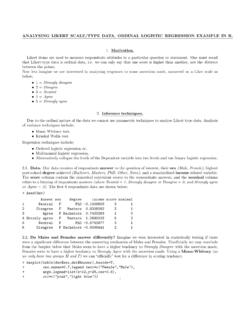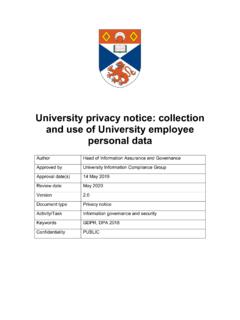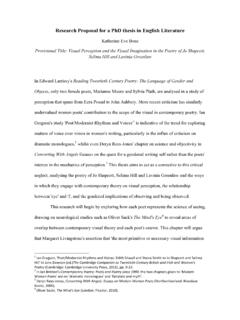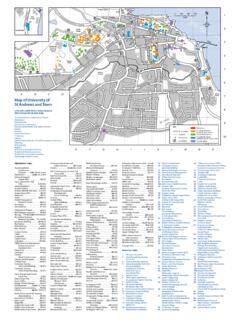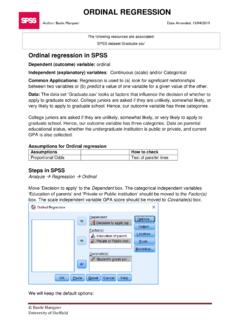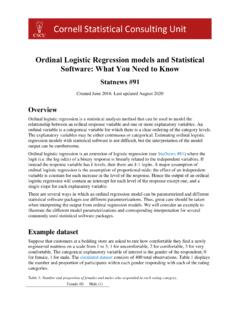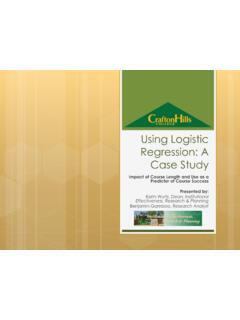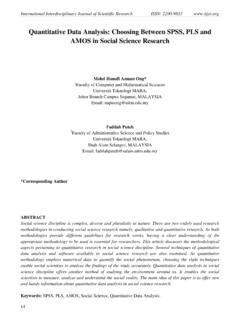Transcription of ANALYSING LIKERT SCALE/TYPE DATA.
1 ANALYSING LIKERT SCALE/TYPE items are used to measure respondents attitudes to a particular question or statement. To analyse thedata it is usually coded as follows. 1 =Strongly disagree 2 =Disagree 3 =Neutral 4 =Agree 5 =Strongly agreeOne must recall that LIKERT -type data is ordinal data, we can only say that one score is higher than another,not thedistancebetween the analysisWith LIKERT scale data wecannotuse the mean as a measure of central tendency as it has no is the average of Stronly agree and disagree?The most appropriate measure of is the modethe most frequentresponses, or the median. The best way to display the distribution of (% that agree, disagree etc)isto use a bar test hypotheses one must initially thinkcarefullyabout the questions you are trying toanswer.
2 Once you have identified your hypotheses, you will have adependent variable, that which is measuredandyourindependent variable/s that which defines your of variance techniques include; Mann Whitney test. Kruskal Wallis may also be combined into saytwonominal categoriesAgree/AcceptandDisagree/Reject , which allowsus to carry out the; Chi-square LIKERT scale is composed of a series of four or more LIKERT -type items that representsimilarquestions combinedinto a single composite score/variable. LIKERT scale data can be analyzed as interval data, the mean is the bestmeasure of central analysis of ordinary averages of LIKERT scale data is justifiable by the Central LimitTheorem, analysis of variance techniques incude; t-test.
3 ANOVA. regression data analysis decision for LIKERT items should be made at the questionnaire development stage. If you have a series of individual questions that have LIKERT response options for your participants to answer- then analyze them as LIKERT -type items , medians, and frequencies. If you have a series of LIKERT -type questions that when combined describe a personality trait or attitude -use means and standard deviations to describe the LIKERT SCALE/TYPE scales are subject to distortion from several causes; Avoidance of using extreme response categories -central tendency bias. Agreeing with statements as presentedacquiescence bias.
4 Attempt to portray themselves or their organization in a more favorable lightsocial desirability scale regression your dependent variable is on a LIKERT scale you should run either; Ordered logistic regression , or; Multinomial logistic collapse the levels of the Dependent variable into two levels and run binary logistic should not use linear regression as linear regression requires a continuous dependent variable. What information is necessary? At the end of the process, what data do you hope to have? What informationis necessary for a decision? Separate need to know from nice to know types of Questions. Dichotomous Nominal level of measurement , 2=veterinarian, Ranking order of preference.
5 Filter or Contingency Questions - you if so how often.
